|
The Harrier is a 2-way speaker based on the 10″ Dayton MB1025-8 Midbass driver. In this design, I mated her with the 18 Sound XT1086 horn coupled to a LaVoce DF10.182K compression driver. The speaker is Active Bi-amped. A 24dB/oct electronic crossover is used to divide the frequency at 2kHz. One high pass to the horn and the other low pass to the woofer. I strongly recommend using electronic crossovers for pro application as 24dB/oct slope offers superior protection for the compression driver compared to a 12dB/oct passive crossover that is often seen in many commercial speakers.
Fig 1 shows the RAW responses of the Midbass (Blue) and the horn combo (Red). Both plots were made without any filters and with the microphone at the horn axis. No smoothing was applied. The plots were not at 1W/1m as it is much too loud in my lab. My intention here is to record the relative loudness of the midwoofer and the horn combo. This will tell me how much to attenuate the horn should I decide to design a passive crossover. Note the deep 2.5kHz notch in the MB1025. Even with the microphone at the horn axis, it’s still there. So, it’s not caused by any faults in my previous measurement.
The Red plot in Fig 2 is the horn combo with a 24dB/oct high pass filter set at 2kHz. I left the downward slope from 3kHz onwards untouched so that it’s easier to make a comparison with the RAW response (Black plot). The response of the midwoofer is in Fig 3. The Black plot is the RAW response of the MB1025 whereas the Blue plot is with the crossover set at 2kHz (24/dB/oct). This is with the midwoofer in a 27 liters sealed box.
Fig 4 shows the two driver’s individual responses with their respective filters. Even though the electronic crossover is set at 2kHz, they are crossing acoustically at 1.8kHz.
The crossover passband is in Fig 4. The midwoofer and the horn combo sum well. No destructive cancellations are observed within the passband.
The final frequency response is in Fig 6 (Black plot). This is actually a very impressive response for a pro speaker. She’s as good or even better than some HiFi speakers. The smoothness of the treble from the XT1086/DF10.172K combo is exceptional.
Fig 7 is with the DF10.172K wired in reversed phase. A null is seen at 1.8kHz. Though it’s not sharp and deep, it is good enough for alignment. During auditioning, I did not detect any phasing issues.
The Waterfall plot (Fig 8) recorded minimal artifacts in the treble. As for those from 1kHz~4kHz, they are already -30dB at 0.88msec. Nothing to worry about.
The ToneBurst plot in Fig 9 shows the artifacts as light blue slices. All of them are insignificant except for those between 1kHz~2kHz. Comparing this plot with the one that’s in the review of the XT1086/DF10.172K, one can conclude than the additional unwanted energy is from the MB1025.
The Spectrogram in Fig 10 provides a better picture of what is happening from 1kHz~2kHz. The artifacts presented as light green streaks are clearly visible. However, they will not smear the midrange as they are dissipated by 6msec
The Step response (Fig 11) of the Harrier doesn’t show any anomaly. The midwoofer is slightly behind the compression driver by about 200usec. The decay is gentle. No nasty peaks.
The Harmonic Distortion (Fig 12) of the Harrier is better than most. Total Harmonic Distortion (THD) from H2~H9 is only 0.702%. This is with a sweep from 20Hz~20kHz. Using a 24dB/oct low pass at 2kHz resulted in a tremendous reduction in the MB1025’s THD. When I tested the midwoofer earlier, her THD (H2~H9) was 3.72%. And that sweep was from 1kHz~20kHz. This indicates the cone breakup is the main cause of the distortion.
The Harrier is on par with the Condors. Her sound quality is excellent. No EQ is necessary to correct any imperfections. She can be used as is, unlike with some PA speakers. What makes the Harrier stands out from the rest is the LaVoce DF10.172K. This is my first time with a LaVoce and I’m impressed with her sound quality. There’s no brightness unlike her Titanium cousins. When she comes on, she doesn’t grab your attention which I find is more natural. One of the things I pay attention to during auditioning is the sibilance in vocals. With the Harrier, it’s perfect. No exaggerated sibilance and no grating highs. However, I find the lower midrange a tad strong. I heard some boxiness, particularly in male voices but I’m being fussy here. In a “live” application when one is speaking into microphone, it’s impossible to pick it out.
The Harrier can be used in a compact sealed box of 27 liters. This is ideal for voice reinforcement. If one prefers the horn combo to be mounted onto the front panel instead of resting on top of the box, the enclosure can be enlarged to 35 liters. The front panel should be able to accommodate the horn. For a more musical production, a bass reflex of 35 liters to 45 liters is advised. With proper tuning, it will extend the F3 to around 50Hz. This is a good choice for a general purpose 2-way. She can handle vocals as well as programmed music at low levels. Compared to the Condors, the Harrier has better power handling. Not simply because the Dayton MB1025 is rated at 350W RMS but it’s the LaVoce DF10.172K crossing at 2kHz @24dB/oct. I believe she will be able to withstand the demands of pro use better than the other compression drivers that I used in the Condors. Unless otherwise stated, all measurements were made with the mic at 36 ins, tweeter axis. Impulse Window=5ms. No smoothing applied. |

September 17, 2023Drivers Evaluation, PRO DRIVERS
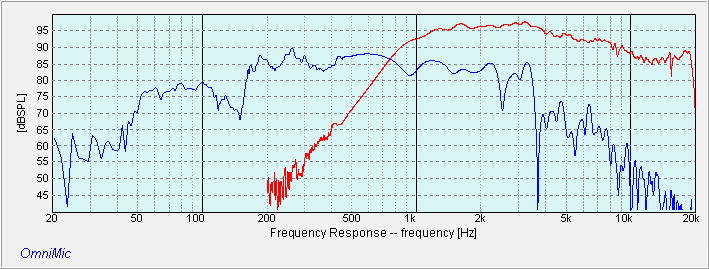 Fig 1 – Blue plot=Dayton MB1025 RAW | Red plot=DF10.172K + XT1086 RAW | Tweeter Axis
Fig 1 – Blue plot=Dayton MB1025 RAW | Red plot=DF10.172K + XT1086 RAW | Tweeter Axis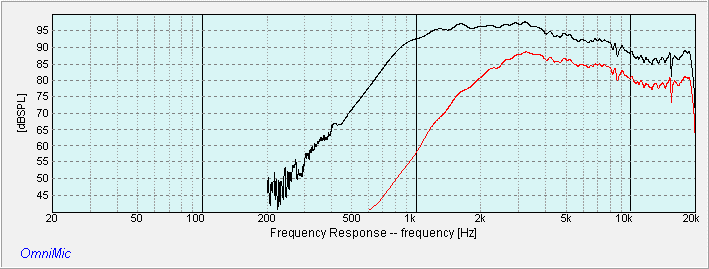 Fig 2 – DF10.172K + XT1086 RAW and 2kHZ HP
Fig 2 – DF10.172K + XT1086 RAW and 2kHZ HP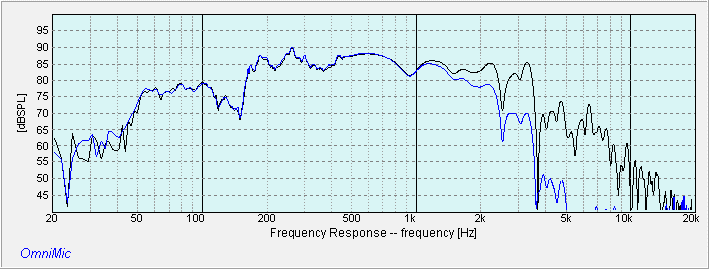
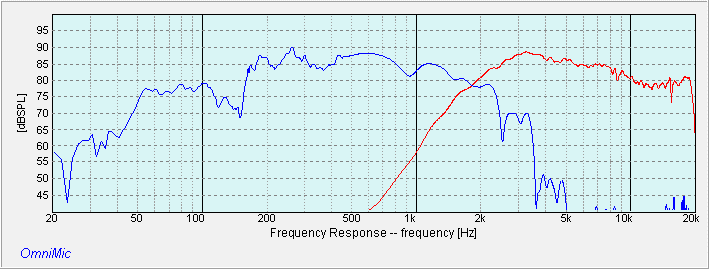 Fig 4 – MB1025 LP (Blue) | DF10.172K + XT1086 HP (Red)
Fig 4 – MB1025 LP (Blue) | DF10.172K + XT1086 HP (Red) Fig 5 – Crossover PassBand
Fig 5 – Crossover PassBand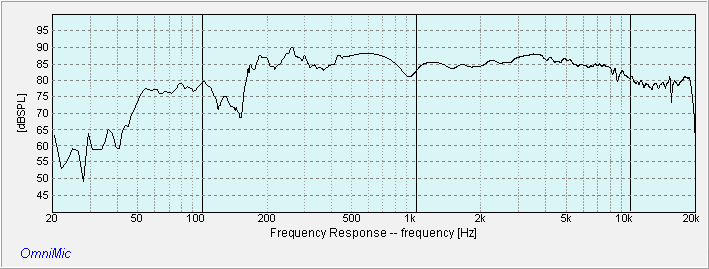 Fig 6 – Harrier Frequency Response
Fig 6 – Harrier Frequency Response Fig 7 – Null
Fig 7 – Null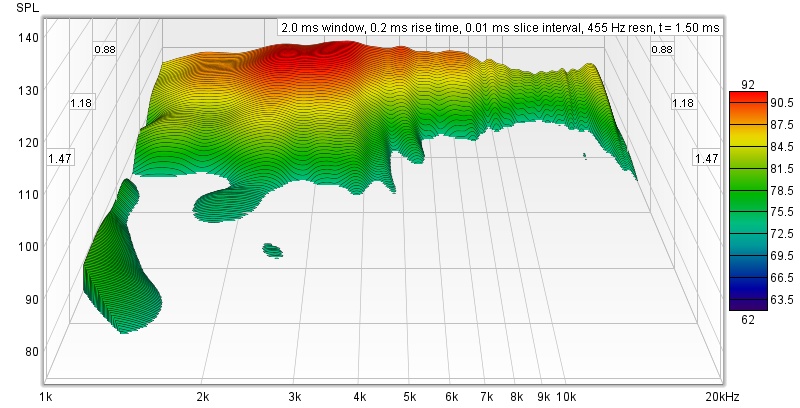 Fig 8 – Harrier Waterfall
Fig 8 – Harrier Waterfall Fig 9 – Harrier ToneBurst Energy Storage
Fig 9 – Harrier ToneBurst Energy Storage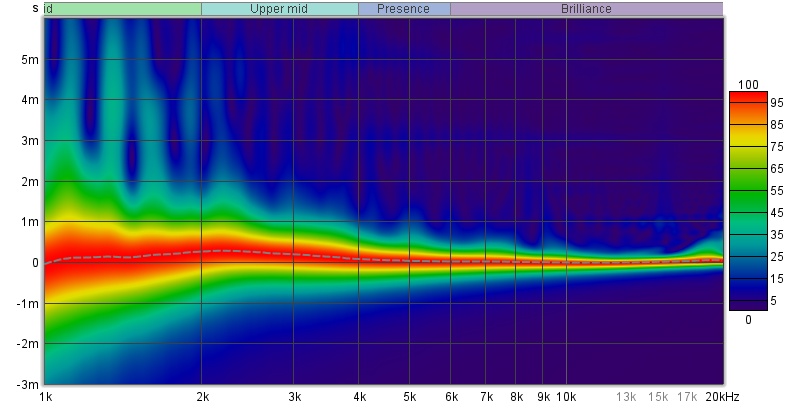 Fig 10 – Harrier Spectrogram
Fig 10 – Harrier Spectrogram Fig 11 – Harrier Step Response
Fig 11 – Harrier Step Response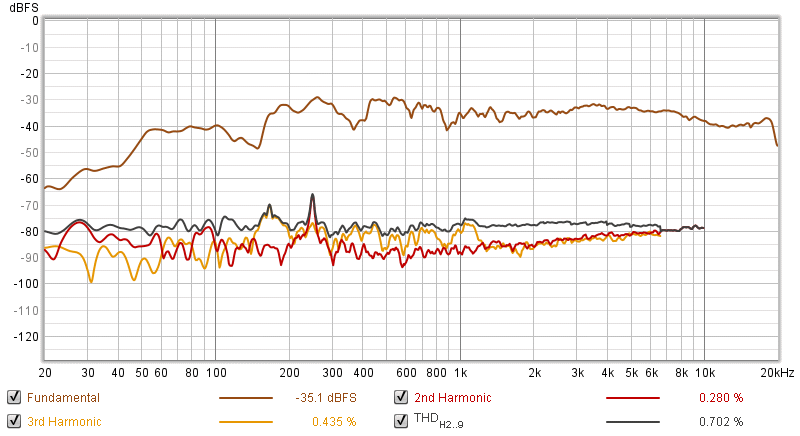 Fig 12 – Harrier Harmonic Distortion
Fig 12 – Harrier Harmonic Distortion